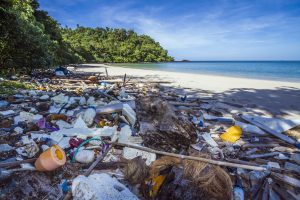The project Wear(e)able was conceived with the idea of reaching as many people as possible with the project outcomes, as it tackles a topic with great social relevance. To think about dissemination was therefore already a crucial issue during the planning stage. We consider our target group – young people – to be the right target group for this topic the following reasons:
- There is currently a great upswing in the environmental movement – initiated mainly by young people who are worried about their future (see the Fridays-for-Future movement). They are open to system-changing alternatives in their life. We want to use this traction for Wear(e)able.
- Young people define themselves strongly through fashion (see Greenpeace Report about fashion consumption among youth “Saubere Mode hat’s schwer”), it is an important topic for most people between 15 and 19 years of age, because they have to choose their clothes and possibly pay for them themselves.
- Since most young people have little money but do not want to do without fashion as a lifestyle factor, they choose cheap clothing, often made of polyester by fashion discounters.
- Peer learning works very well among young people. They therefore naturally act as multipliers: If they are given new knowledge that they feel is worth telling others about, they will do so.

Planet Earth is struggling with the current growth of world population and their consuming of goods. Clothing plays a crucial role, as the fashion industry is a massively growing industry (according to Greenpeace report “Konsumkollaps durch Fast fashion”, worldwide fashion production has doubled between 2000 and 2014). Unfortunately, this growth seriously impacts environment. The pollution of our ecosystems, especially oceans, caused by clothing industry, is a serious issue that must be tackled on a global scale. Environmental degradation, human health issues, global warming, infertile land and many more, may be more present elsewhere on this planet than in Europe. However, the industrialized countries, and therefore Europe as well, play a very large part in causing these problems. Since this is where most consumption takes place – especially among young people – effective information work must be carried out here, in order to counteract the low awareness among people about environmental consequences of their everyday activities, such as their fashion consumption behavior. That is why it is fundamental to start a societal transition towards green economy and lifestyle within a broad network, that should not be limited by national borders or language barriers.
